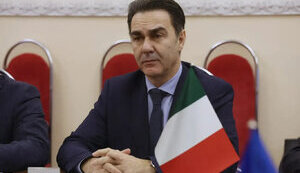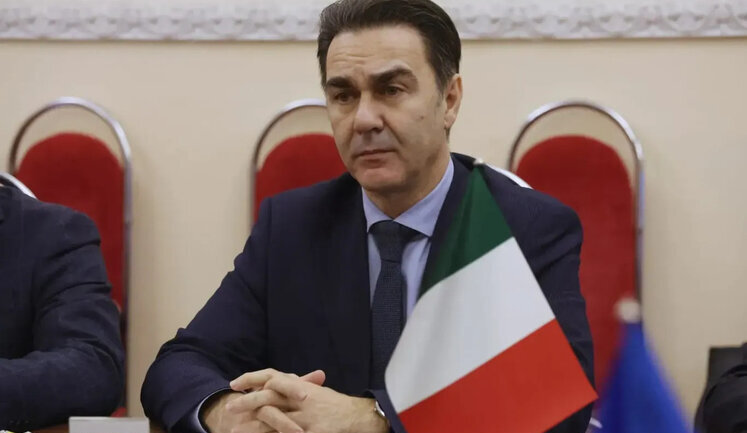The European Union has made a significant decision to provide Ukraine with €6 billion from frozen Russian assets, aimed at restoring energy infrastructure and stabilizing the power grid. This financial aid is seen as crucial for maintaining economic stability and enhancing Ukraine's defense capabilities. President Volodymyr Zelenskyy has emphasized the importance of these funds, describing them as vital for the country's survival. Discussions continue within the EU regarding the use of such assets, with some opposition from countries like Slovakia, while others are negotiating for additional reparations loans. The EU's focus remains on leveraging immobilized Russian resources to support Ukraine amidst ongoing geopolitical tensions.
What is the purpose of the EU using frozen Russian assets?
The EU is using frozen Russian assets to support Ukraine by financing energy restoration and stabilizing the power grid. Additionally, these funds are intended to bolster Ukraine's economic stability and defense capabilities amid ongoing conflict. By leveraging these immobilized resources, the EU aims to provide critical financial aid to Ukraine during a challenging period.
How much has Ukraine received from frozen Russian assets?
As of now, Ukraine has received significant financial support from the European Union, including a new tranche of €6 billion from the proceeds of frozen Russian assets. This funding is part of a larger effort to provide Ukraine with resources needed for infrastructure restoration and military support, ensuring economic and defense stability.
Why is there opposition to using frozen Russian assets?
Opposition to using frozen Russian assets primarily stems from concerns over legal implications, political risks, and the potential for negative diplomatic repercussions. Some EU member states, like Slovakia, have expressed reservations, fearing that such actions might violate international laws or provoke a strong response from Russia. Additionally, financial risks associated with redistributing these assets remain a significant concern for countries like Belgium.
How does the EU plan to address legal concerns with asset usage?
The European Union plans to navigate legal concerns around using frozen Russian assets by ensuring all actions comply with international law. This involves thorough discussions and negotiations with member states to establish a legal framework that respects global norms while achieving the goal of supporting Ukraine. The EU's approach includes addressing risk-sharing and securing political consensus among its members to mitigate potential legal challenges.
What impact could using frozen assets have on EU-Russia relations?
Using frozen Russian assets could significantly strain EU-Russia relations, potentially leading to diplomatic tensions or retaliatory measures from Moscow. Russia has already warned of a "painful response" if confiscations proceed. The EU must balance its support for Ukraine with maintaining diplomatic channels to avoid exacerbating geopolitical conflicts, demanding careful navigation of international policy and economic factors.
Are there other countries using Russian assets to aid Ukraine?
Other countries, like the UK and Japan, are also considering or have already started using frozen Russian assets to provide financial aid to Ukraine. The UK is exploring the idea of funding new loans with Russian assets, while Japan is expected to deliver its first tranche to Ukraine by early 2026. These international efforts reflect a broader coalition built to support Ukraine's resilience against ongoing adversities.
What are the risks involved in using frozen assets for financing?
Using frozen assets for financing carries several risks, including potential legal battles, the threat of diplomatic fallout, and the challenges of ensuring fair distribution among EU states. Furthermore, these actions may deter future investors if they perceive financial dealings within the EU as politically unstable. Effective risk management and clear legal agreements are crucial for mitigating these challenges while attempting to assist Ukraine.
How does Ukraine benefit from these assets?
Ukraine benefits from these assets through enhanced financial support for its energy infrastructure and military readiness. The funds facilitate essential projects, including grid stabilization and defense system enhancements, crucial for sustaining national operations amid crisis conditions. This financial backing is pivotal for Ukraine to reinforce its defense strategies and maintain economic stability in the face of ongoing challenges.
How has Ukraine responded to the EU's decision?
Ukraine has welcomed the EU's decision to allocate funds from frozen Russian assets, viewing it as a critical step to ensure the nation's economic and defense stability. President Zelenskyy has strongly advocated for this financial support, acknowledging its significance for the country's survival and resilience. The aid is seen as a crucial lifeline for Ukraine in these trying times.
What are the future prospects of using frozen assets for Ukraine?
Future prospects include ongoing negotiations within the EU to provide additional reparations loans using frozen assets. While there has been hesitation from some member states, the general trend appears favorable, with many countries endorsing the strategic use of these resources to aid Ukraine. Successfully navigating legal and diplomatic challenges could pave the way for continued support, significantly impacting Ukraine's capability to manage economic and military needs.


























































